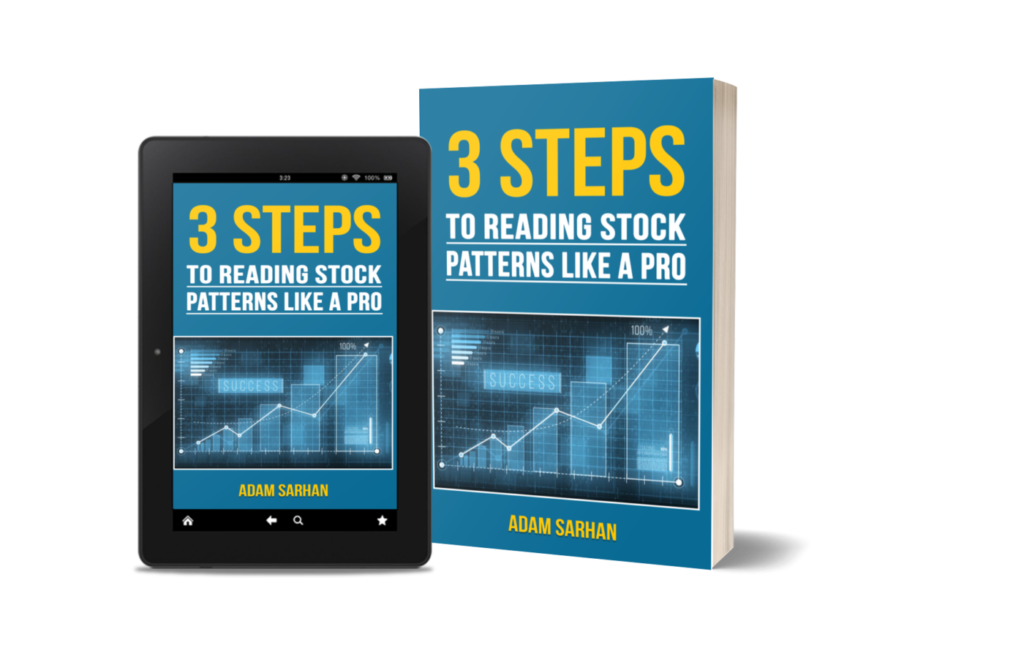 Depending upon which side of the trade you’re on, a price gap can be either great or very scary! Gaps tend to occur when a major event hits the company of the underlying stock, its industry group, sector, or the market as a whole. Some of these events are foreseeable while others are not. We’ll discuss all that and more in our Trader’s Price Gap Survival Guide.
Depending upon which side of the trade you’re on, a price gap can be either great or very scary! Gaps tend to occur when a major event hits the company of the underlying stock, its industry group, sector, or the market as a whole. Some of these events are foreseeable while others are not. We’ll discuss all that and more in our Trader’s Price Gap Survival Guide.
The following are a list of events which are foreseeable and that we should always try to plan for:
- Earnings announcements
- Product launches
- Major conferences
- Fed announcements
- Events surrounding cousin stocks
The best place to find out when these events are to occur (aside from Fed announcements) are on the company’s website. For Fed announcement dates I like to use MarketSmith and for commentary and analysis leading up to and post Fed announcements I’ll read Adam Sarhan’s commentary from our Advanced Reports.
Preparing for the gaps: Strategies and Tactics
When we’re able to anticipate gaps based on the above events, there are several ways we can prepare for them before they occur. Trades can even be taken right up to and through the events. Here are some of the ways I like to prepare ahead of an event:
- Analyze the charts including:
- Identification of the dominant trend across time frames (daily/weekly)
- Volatility expansion or contraction
- Base pattern and base stage analysis
- Volume analysis
- Identifying support and resistance levels
- Relative strength analysis
- How the stock has behaved around similar prior events
- How stocks in the same industry group have behaved around recent events (typically earnings)
- Identifying market health
- Use of Options
- Alternate Position Sizes
Options
 When we know an event (such as earnings) is coming up and a strong move one way or the other is likely, one of my favorite ways to play it is with options. When used properly, options are among the best trading vehicles to control risk. If I am bullish on the stock I’ll use call options and if I’m bearish on the stock I’ll use put options. The basic mechanics are as follows:
When we know an event (such as earnings) is coming up and a strong move one way or the other is likely, one of my favorite ways to play it is with options. When used properly, options are among the best trading vehicles to control risk. If I am bullish on the stock I’ll use call options and if I’m bearish on the stock I’ll use put options. The basic mechanics are as follows:
- Identify the stock I’m interested in
- Check the liquidity of the options for this stock.
- If the stock itself is thinly traded (under 400k shares/day), move on.
- If the open interest on the options are thin, move on.
- If the bid/ask spread is too wide (most I’ll tolerate is .20) move on.
- Perform the technical analysis outlined earlier
- If going long, look at calls 3-4 months to expiration at the strike price close to the pivot
- If going short, look at puts 3-4 months to expiration at the strike price close to the pivot
- Assume the entire premium of the option is at risk, this is the maximum you are willing to risk.
I will typically employ this strategy anywhere from 2 weeks before the event at the most to the day before the event. I like to purchase options 3-4 months out ahead of an event because there is still plenty of time value left on the option and therefore the price of the option moves more in tandem with that of the underlying stock. On a price gap against me of about 15%, the most I’ve seen the value of the option deteriorate is by about 50%. My point here is that if we treat the entire premium as being at risk, we are still able to walk away from the trade with something should price gap against us after the event. For those familiar with Van Tharp and the concept of R (R being the total amount risked on the trade) if the full premium of the option is 1R, typically on a move that gaps against us while employing the above strategy, we will only lose 0.5R
One of the best examples I have of using this strategy in real-time is a trade I made on TWTR heading into earnings on 07/29/2014 . This trade was posted in our Community page but to summarize, I saw the setup ahead of earnings and noticed a major volatility contraction heading into it. I also noticed that TWTR had formed a bottom, was setting up in a somewhat non-traditional cup with handle (typically we like to see bases form after a run of 30%, not off the bottom like this) and it was trading right up against a long term descending trend line which is visible on both the daily and the weekly chart. On the day before earnings were set to be released, I purchased November call options with a strike at $40 making them slightly out of the money. After earnings were released and TWTR gapped up in my favor. From there I managed the position as I would if I were trading the common stock. My preference is often to use the 10ema as a sell guide and that is what I did here. I exited on 09/15/2014 at $50 for a gain on the call options of roughly 250%.
Alternate Position Sizes
 So let’s say the stock you’re interested in is thinly traded, doesn’t have a liquid options market, or we aren’t interested in using options. This is where an alternate position sizing strategy comes in handy.
So let’s say the stock you’re interested in is thinly traded, doesn’t have a liquid options market, or we aren’t interested in using options. This is where an alternate position sizing strategy comes in handy.
The primary reason so many traders avoid taking trades leading up to and through major events such as earnings is because it is one of the most challenging times to manage risk. On a typical trade we will enter at one price and have a pre-determined place where we will exit if we are wrong. By doing this, we know exactly what we stand to lose if we are wrong. During major events such as earnings, price can easily gap beyond our pre-determined exits and we can lose far more than we ever intended… if we don’t plan ahead… But what if we do plan ahead?
Let’s take a look at a few different scenarios most traders would avoid:
- Before Entry: The stock we’re interested in is setting up in a well formed flat base ahead of earnings and breaks out the day right before earnings. Could we take this trade?
- While Holding: We are in a stock and it is set to present at a major industry wide conference next week. It has had a significant run but is otherwise showing no sell signals. Should we hold?
- Shorting: The market appears to be topping ahead of the next fed announcement. The indexes appear to be on the verge of breaking down and several indicators “under the hood” are flashing warning signs. Do you short ahead of the move?
It’s possible to answer yes to all of these questions. All that is necessary is performing the technical analysis outlined earlier and utilizing the right position sizing strategy.
Switching the variable
 Many traders treat position sizes as a constant value (either a dollar value for the position size, number of shares, or both) and adjust their “risk” based on where they plan to exit. However, in this equation, if we treat the dollars risked as the constant and treat the position size as the variable, we can take almost any position at any time and simply adjust our position size and the amount we’re willing to risk accordingly.
Many traders treat position sizes as a constant value (either a dollar value for the position size, number of shares, or both) and adjust their “risk” based on where they plan to exit. However, in this equation, if we treat the dollars risked as the constant and treat the position size as the variable, we can take almost any position at any time and simply adjust our position size and the amount we’re willing to risk accordingly.
Let’s take a look at the above examples and see how position sizing can help us. To keep the math simple, let’s assume we have a $10,000 account and will risk 1% of capital (or $100) per trade. Let’s also assume that this is a trade that we’re actually interested in (have passed our scans, are part of the ChartYourTrade Universe, and are setting up in well formed patterns).
Before Entry:
[su_rectangle_ad_left]The stock we’re interested in is setting up in a well formed flat base ahead of earnings and breaks out the day right before earnings. Could we take this trade?
1. Through using the technical analysis outlined earlier, we will be able to identify all levels of significant support on both the daily and weekly charts. Let’s assume we’ve identified the pivot point as $50 and the first major support level at $48 with the 50dma close behind. Let’s also assume that the next major support level after that is $43 with the 200dma not far behind.
If we buy the breakout ahead of earnings, using the position sizing strategy above vs the first level of support at $48, our equation and position size would look like this:
$50 – $48 = $2 (amount risked per share). $100 (total we are willing to risk) / $2 (amount risked per share) = 50 shares
So we buy the breakout at $50 and it runs to $52 on above average volume. Earnings is being released tomorrow morning. Aside from it being the day before earnings, everything else we consider seems to be fine.
Alternate position size 1, Breaking Even at the First Major Support Level: Sell enough shares to lock in profit to where if we see a gap down to our first major support level at $48, we break even. $52 – $48 = $4.
In our example we have a $100 profit. If we sell 25 shares (half the position) we are locking in a $50 profit. IF after reporting earnings, we see a sell off, any price above $48 will still have us at a profit on the trade.
Alternate position size 2, breaking even at the Second Major Support Level: Sell enough shares to lock in profit where if we see a gap down to our first major support level at $43, we back even. $52 – $43 = $9
In our example we have a $100 profit. If we sell 39 shares, we are locking in a $78 profit. IF after reporting earnings, we see a sell off, any price above $43 will still have us at a profit on the trade.
Checkout our free position size calculator to help you do this calculations quickly and easily.
While Holding:
 We are in a stock and it is set to present at a major industry wide conference next week. It has had a significant run but is otherwise showing no sell signals. Should we hold?
We are in a stock and it is set to present at a major industry wide conference next week. It has had a significant run but is otherwise showing no sell signals. Should we hold?
To answer this question there are a few more questions we’ll want to have answered first…
- What is our time frame? Short, intermediate, or long term?
- When did we enter the position and what is our gain on the position (the stock may have had a significant run but we may have caught the latter part of the run)?
- What is the current market environment like?
- How are other stocks in the same industry group behaving?
- What are the technical elements discussed earlier telling us?
Assuming the answers to the above questions are all positive, we still must build our worst case scenarios and doing so involves identifying where support lies on each time frame. Even if we are trading for a shorter term, it’s helpful to know where support on weekly and monthly charts lie as buyers of those time frames may step in to support the stock. Furthermore, it’s always easiest to follow the dominant trend and the dominant trend is the longer term trend.
Once we have identified support, we can determine how much of our gains if any we are willing to give up to see that support level tested. This is a personal question that we must all figure out for ourselves. Some of us may be comfortable sitting through a 15% correction, a 25% correction, or more. There’s no one right or wrong answer but there is a right and wrong answer for each of us.
After we determine how much of our gains we are willing to give up, we can use the alternate position sizing method discussed earlier to determine how much, if any, to sell before the event.
My personal trading style has me locking in gains quicker and risking less. The reason is because we typically generate 30 or more setups between our Top 10 Setups in Bases and Ready Lists on a given week. I’d rather only hold the strongest of positions (those holding the 10 and 21emas in most cases) and exit them quickly when they show weakness as we have many other setups ready to go. I’ll re-enter stocks I’ve exited later on if they setup again.
Shorting:
 The market appears to be topping ahead of the next fed announcement. The indexes appear to be on the verge of breaking down and several indicators “under the hood” are flashing warning signs. Do you short ahead of the move?
The market appears to be topping ahead of the next fed announcement. The indexes appear to be on the verge of breaking down and several indicators “under the hood” are flashing warning signs. Do you short ahead of the move?
My answer to this question is a resounding YES but there are some caveats. If shorting a stock (vs shorting an ETF) we’ll want to make sure the stock meets these minimum requirements:
Liquidity
- The more shares traded per day the better. DO NOT SHORT IF THINLY TRADED. A stock with less than 400k shares/day can succumb to just 1 large buyer significantly moving the stock.
Technicals
- Former leader from the prior bull cycle. Look for huge run ups over a long period, or climactic moves over a shorter period
- Look for Head and Shoulder tops and late stage, wide and loose improper bases
- Look to short former leaders that have 5-7 months after the absolute peak.
- Look for the death cross, this can be shorted on runs back to the 50dma
- 3rd stage base or later
- Wide and loose price formations, especially when compared to prior formations
- Upward wedging handles
- Cups with handles that have the handles in the lower half of the base
- V shaped bases
- After 1st sharp break of the 50dma, look for the 2nd as the one to short
- Look for overhead supply
- Look for rallies up to the 50dma after breaking below it. 3 or more is optimal
- Look for stalling action particularly around the 50dma
- Climax topping patterns, (railroad tracks, island tops, etc…)
Ownership
- Increasing fund ownership, a lot of funds owning it and may need to unload
- Short interest less than 5 days
Provided most of these requirements are met, the alternative position sizes noted earlier may be used.
With shorting, it is often advantageous to short as close to resistance as possible. Keeping the dollars of risk you wish to allocate in mind at all times, I will typically use half the normal position size when shorting and the potential for a gap up is high.


